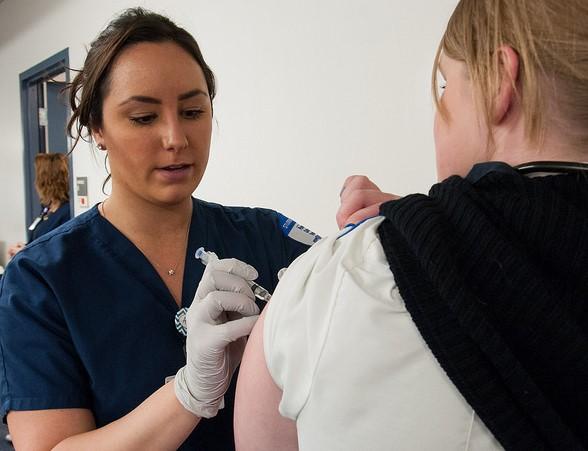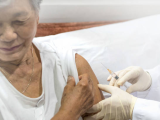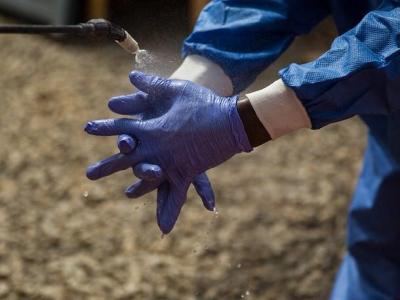In an annual event to build support for flu vaccination and take stock of the nation's uptake trends, federal officials said today that vaccination rates rebounded slightly last season, led by better coverage in adults over age 50, but immunization reached only 46.8% of the population.
Health officials and other experts, speaking at a media briefing in Washington, D.C., focused on the latest coverage levels in specific populations targeted for vaccination, including kids, pregnant women, healthcare workers, and older people. The US Centers for Disease Control and Prevention (CDC) published the findings on its FluVaxView Web site and in two reports in the latest edition of Morbidity and Mortality Weekly Report (MMWR).
Health and Human Services Secretary Tom Price, MD, said flu seasons are difficult to predict, but vaccination can help blunt the impact of the disease and cut hospitalizations and deaths. "Today, I am leading by example and getting vaccinated against flu. I urge everyone 6 months and older to do the same as soon as vaccine is available in their community," he said.
Price said manufacturers expect to make 151 million to 166 million doses of flu vaccine for the US market, up from 146 million doses distributed during the 2016-17 season.
Closer look at uptake numbers
The highest vaccination coverage—76.3%—was in children ages 6 to 23 months, the only group to exceed the national goal of 70%. Patsy Stinchfield, RN, MS, CPNP, who specializes in vaccine-preventable diseases at Children's Minnesota health system, told reporters, "We're good at vaccinating younger kids, but vaccinating your teenager is just as important."
For pregnant women, an Internet panel survey to track uptake found coverage last season was 53.6%, similar to the past three seasons. Most women who received a provider recommendation and an opportunity to receive the shot got vaccinated. William Schaffner, MD, medical director of the National Foundation for Infectious Diseases (NFID) and professor of infectious diseases at Vanderbilt University in Nashville, said that, with roughly half of pregnant women not getting the vaccine, "We still have more work to do there."
Among healthcare providers, uptake was 78.6%, similar to the previous season, with patterns consistently higher in hospital-based workers. The MMWR report that detailed the latest coverage findings said settings where vaccination coverage wasn't required or wasn't offered on-site at no cost had lower flu vaccine uptake.
Anticipating the start of flu season
Australia has battled a tough flu season, led by the H3N2 strain that hits older people and young children the hardest, raising questions about whether that pattern will extend to Northern Hemisphere countries.
Dan Jernigan, MD, MPH, with the CDC's National Center for Immunization and Respiratory Diseases, said Australia has clearly had a difficult season. "We don't know if we'll have a bad season." He pointed out that the United States grappled with a moderately severe flu season last year, which resulted in about 600,000 hospitalizations.
Health officials will also be closely watching for any possible mismatch between circulating strains and those included in the vaccine. Today vaccine advisors for the World Health Organization (WHO) recommended a different H3N2 strain than the one in the Northern Hemisphere's current vaccine for the Southern Hemisphere's 2018 season (see related CIDRAP News story).
Jernigan said the most recent circulating H3N2 strains have shown some drift, but genetic monitoring hasn't signaled any significant mutations.
Encouraging uptake in patients
Panelists at NFID's media briefing emphasized the key role health providers play in encouraging patients to be vaccinated, and they also added a reminder about offering pneumococcal vaccine for those recommended to receive it.
Stinchfield said of the flu vaccine, "I challenge all US healthcare providers to give a clear, strong recommendation. We need to make every visit a vaccine visit."
And Schaffner urged healthcare providers to become "vaccine insisters" rather than "vaccine recommenders." He acknowledged that the flu vaccines aren't perfect in terms of effectiveness, which averaged 48% last season but added, "With this pretty good vaccine we can do an awful lot of good."
See also:
CDC FluVaxView Web site
Sep 29 MMWR report on flu vaccine uptake in health workers
Sep 29 MMWR report on flu vaccine uptake in pregnant women
Sep 28 NFID press release



















